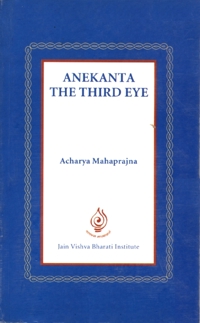
There is mutual connection between everything. Nothing is totally independent. Though from the outside things may look separate, from inside they are all inter-connected. We do not know the unity underlying the diversity. Similarly we do not know the multiplicity that lies beneath unity. Our perceptions are divided. Therefore it is that even in philosophy if non-dualism developed so did dualism along with it. One contention was that everything is one, there is nothing different from that one, complete monism. Even monism is of two kinds. One is the argument of the Caravakas and one of the Vedantics. One feels there is the insentient only and not the sentient. From the insentient, the sentient develops. An atheist believes that the sentient is not real. The root principle is that of the insentient. Only atoms, only matter. From that the sentient is born. The composition of the insentient is such that from it is born the sentient. This is core-monism or insentient monism.
The other philosophy says there is the sentient but not the insentient. From the sentient the insentient is born. This is Brahma-monism or the sentient monism. Both the philosophies are two extremes. One is hinged on the sentient and the other on the insentient. Not always in inconsistency nor always in consistency.
Anekanta looked for the middle path between these two and laid down the third rule to say that there is nb eternal conflict or synchrony between the sentient and the insentient. We cannot say that the insentient and the sentient are always in opposition to each other. If that were true and they were always in opposition, then the soul and the body would not be one, they would be separate. The body and the soul are one because the opposition between the two is not constant. Many a time the question that crops up in the world of philosophy is that how did the incorporeal soul combine with the corporeal body? How does the incorporeal soul relate to corporeal karmas? How come the conscious soul combines with the material body? If we think of the two as constantly in opposition, then we would never be able to answer the question. If we however accept the possibility that the two are not constantly in opposition then we can come up with answers. If they were in constant opposition, they would not be able to be together at all.
The son said, "Father! I will not dine with you from now on. I want to be a separate entity." The father said, "No problem. Till now you were dining with me. Today I will dine with you."
Similar is the relation between the sentient and the insentient. They are never separate, they are always together. They make use of each other fully. The sentient is making use of the insentient and the insentient of the sentient. The sentient holds on to the insentient and the insentient to the sentient. The rule is that the conflict between the two is never total. The dissimilarity between the two is also not total. There is a similarity also between the two. All the attributes of objects are complementary to each other. Only modes differ. When we look at the world in terms of the differing modes then all we see is difference, difference and more, difference. When we see the unexpressed modes then we can see only the similarity, similarity, and more similarity.
Our living world has clarity. Within it we see only the differences: the plant world, the organisms with single sense organs, those with two sense organs, those with three sense organs, with four, five sense organs, animals, man and so on. If we however begin to see the unexpressed modes then all these divisions will go awry, will not exist. All that will remain will be the consciousness. It is equal in all living beings, be it a plant, an insect, man or animal. Only the consciousness remains, the consciousness. All other distinctions fall off. Only one remains and that is the consciousness. Difference and similarity, opposition and harmony, these are all divisions based on the mode of the object. In an object both contrary attributes co-exist. Opposition and harmony, existence and non-existence, reality and unreality, eternal and temporary...these pairs coexist. The difference is in the modes of the object and in our vision. We see the objects in the gross form and base our divisions thereof. It is worth reiterating that all our decisions, beliefs, thinking and principles are based on the observations of the gross modes of the world. We should not mistake them for eternal rules, for rules governing reality, for the rules for the world of the subtle.
 Acharya Mahaprajna
Acharya Mahaprajna
